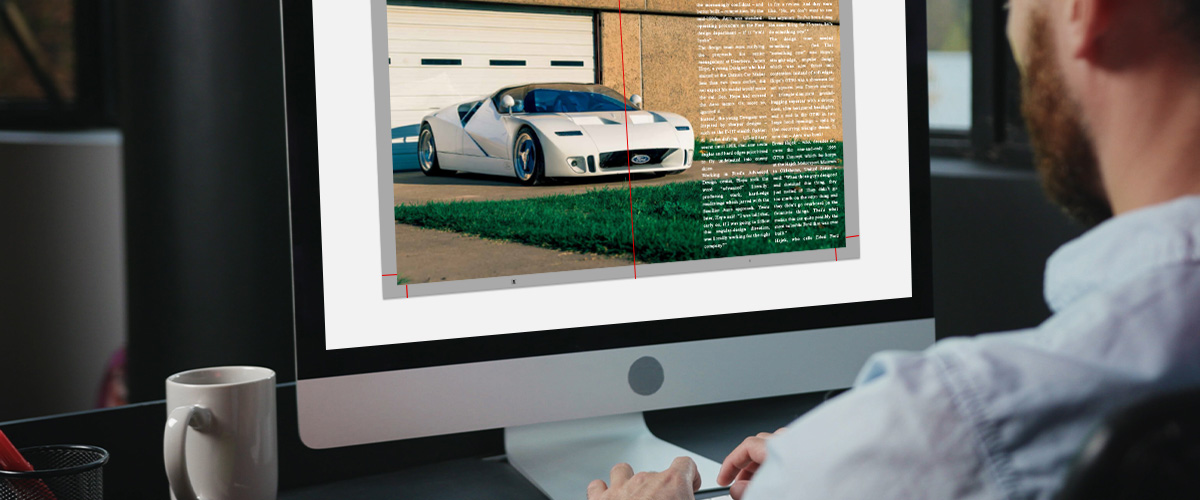PDF Proof

A PDF proof is an electronic file for a client to approve or make comments on. PDF stands for Portable Document File, a printing file format that we use for printing purposes. PDF is the industry-standard format for a client supplying a job to a printing company. It is also used for the printing company to prove back to the client. A PDF proof can be opened on most electronic devices, from a mobile phone to a monitor. This enables a client to view and check a PDF anywhere in effect. It also means the PDF proof can be circulated to more than one person for checking and comment.
PDF proofing saves time and money if used correctly.
How Is a PDF Proof Created?
Pre-press systems in printing companies process the high-resolution PDF files supplied by the client. These are then checked for common errors. This is called pre-flighting. The final PDF files for printing are then scaled down to a lower resolution version. This PDF proof can be emailed or messaged to the client for approval or comment. This ensures the integrity of the proof file is the same as the print file. As only an electronic process has taken place so far, any corrections needed are easier and cheaper to do.
What Can Be Checked on a PDF File?
The artwork we use for printing is in high-resolution PDF format. After we receive the printing files from our client, our designer will check for the following pitfalls:
- The artwork has the correct amount of bleed.
- The images are the correct resolution.
- The texts are not too close to the trim or fold edge.
- Small size texts are not set up as CMYK.
- Any solid black background is not set up as purely 100% black.
- The artwork size and the order size are as specified.
We also:
- Remove all embedded ICC profiles
- Check the fonts are embedded
- Flatten all transparency
- Convert all colors (RGB or Pantone) to CMYK if the job is to be printed full color
- Measure the spine thickness and ensure the text and images on the spine match the spine thickness
- Ensure the hardcover binding book has enough wrapping space on the cover artwork
- Make sure the foil stamping, spot UV, embossing and debossing artwork are vector graphics or vector texts.
Low-Resolution PDF Proof for Approval
After any of these issues are highlighted we will modify them if possible. If this is not possible, we will ask you to modify the elements in your original artwork. We will send you a set of low-resolution PDF proof by email to highlight any issues. If you are unsure how to correct any of these issues you can upload the original artwork. We will then modify it, generate new PDF print files and reproof to you. We are happy to offer advice on addressing any of the common issues met when creating print-ready artwork.
Most professional designers produce perfect artwork. Even if your artwork is perfect, we will still send a set of low-resolution PDF proof for approval. The PDF proof will give you a final chance to check any grammatical errors, typos, etc.
In comparison to other options, PDF proof is undoubtedly one of the most cost-effective proofing methods. For customers and jobs that demand high color accuracy, a PDF proof alone is not the best solution.
For anything color critical, we recommended you use hard proofing, a digital sample, an offset printing sample or a dummy. Sometimes more than one of these proofing methods may be required.
The proofing method depends on time, budget and expectations. Most designers and clients will be happy with a PDF proof as they are confident about how their artwork is set up. This will save time and keep costs down.
For larger runs of jobs and those that demand very critical color and image reproduction, it is worth considering other proofing options. The expense involved if the printed job is not correct can far outweigh the proofing costs.
Can I Correct the Errors in PDF Proof?
No, you can’t. A PDF proof is low-resolution. It is just for approval by email, it is not the final printing file. If you need to correct any errors, this needs to be done in your original artwork. This then needs to be resubmitted to the print company. Comments can be made on the PDF proof in Adobe Acrobat. This can then be sent to others to comment on or to correct.
For example, the end client may mark up a PDF proof and send it back to their designer for alteration. Or a PDF proof may have to be approved by several people.
It is important to remember that the PDF proof is a low-resolution version of the actual print files and comment accordingly.

Start your printing project with QinPrinting
Explore all our different printing choices
